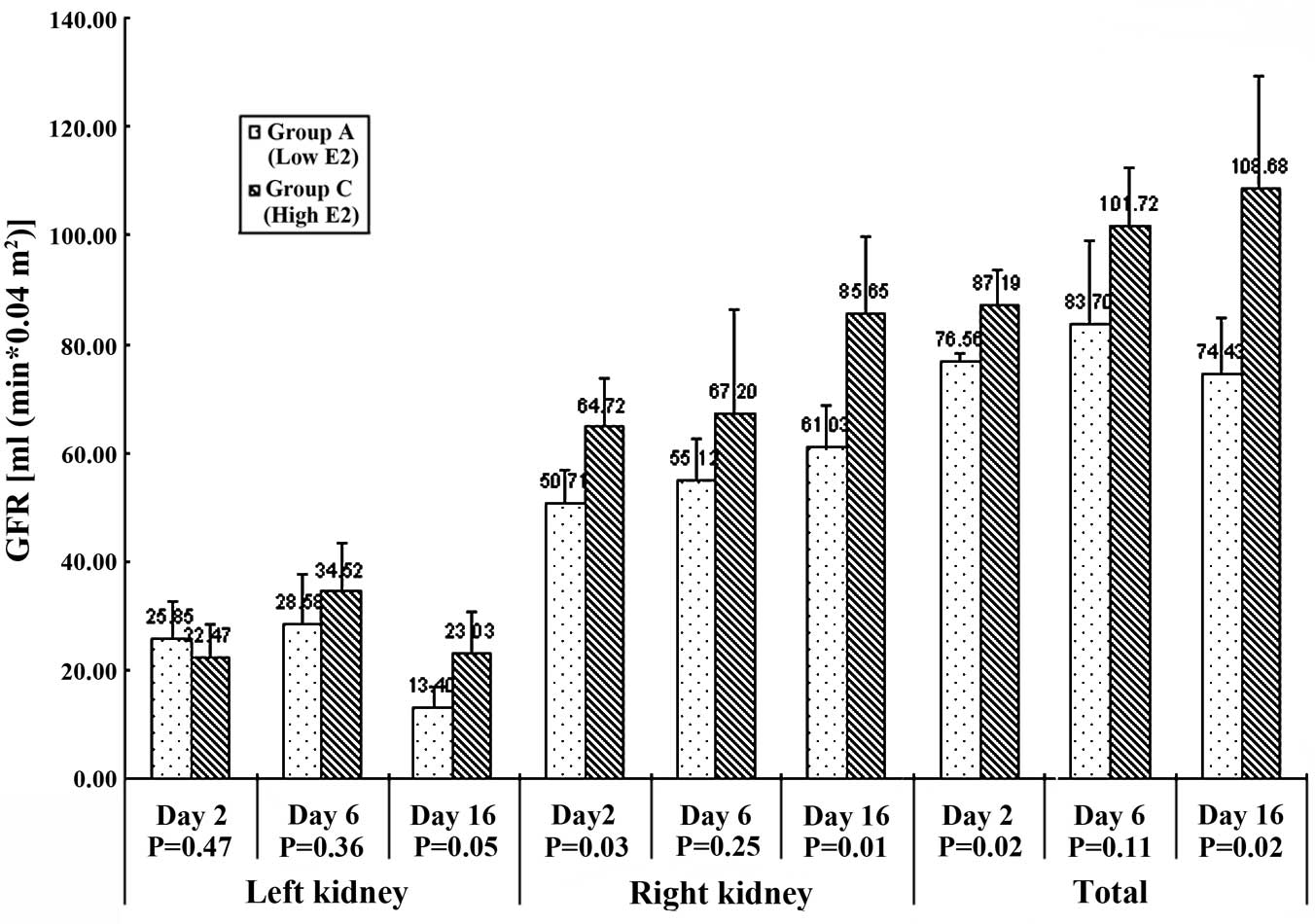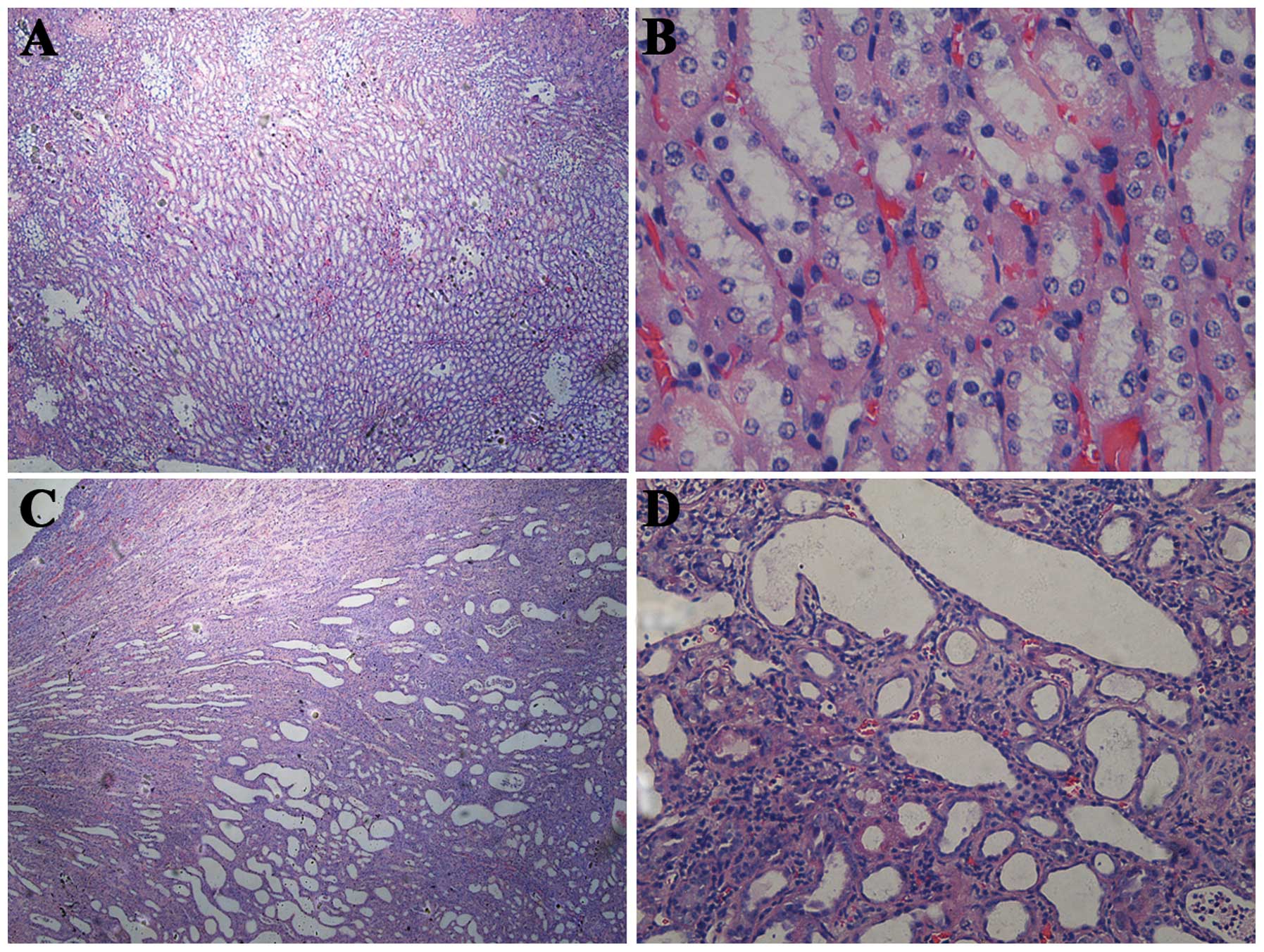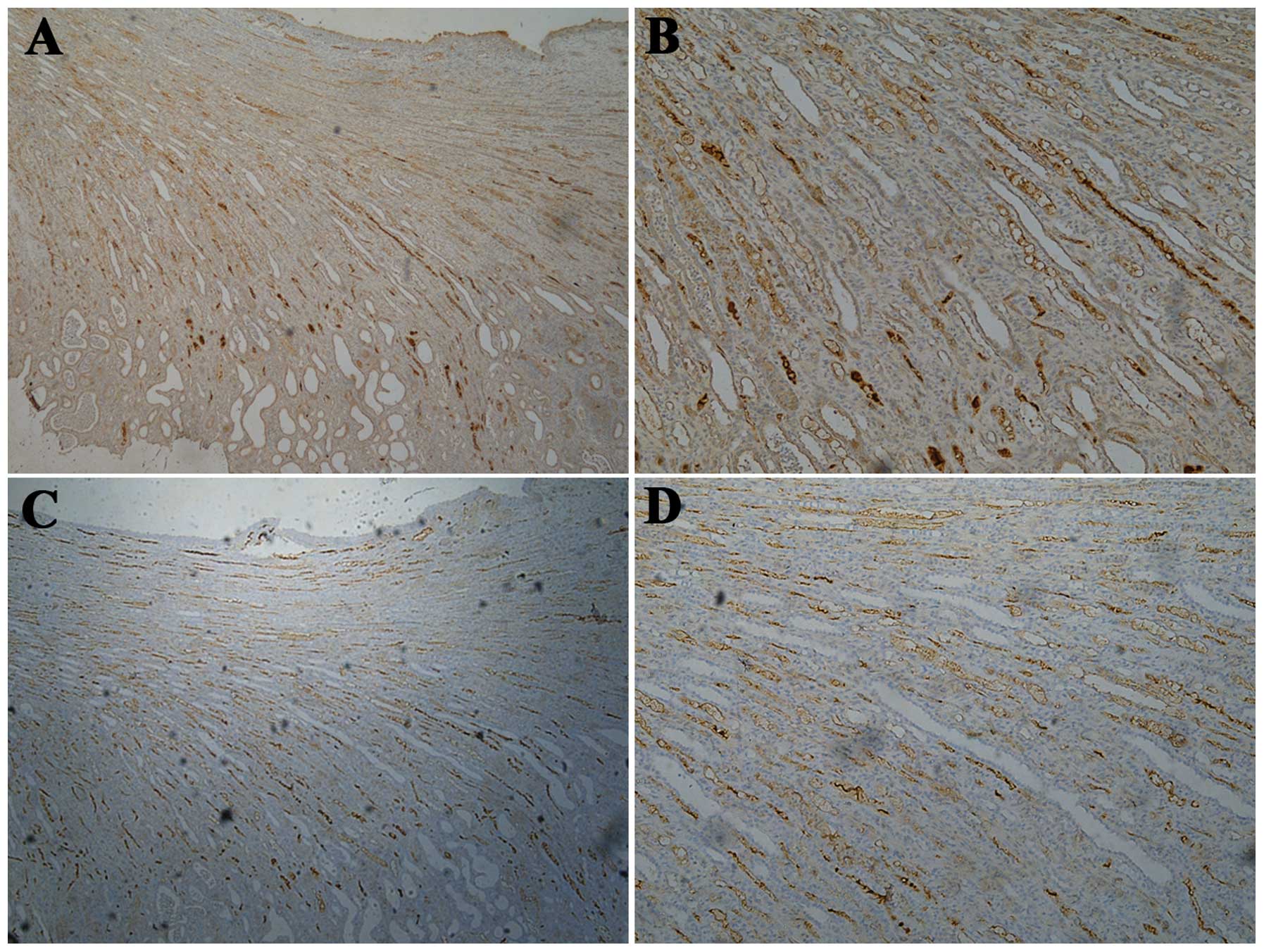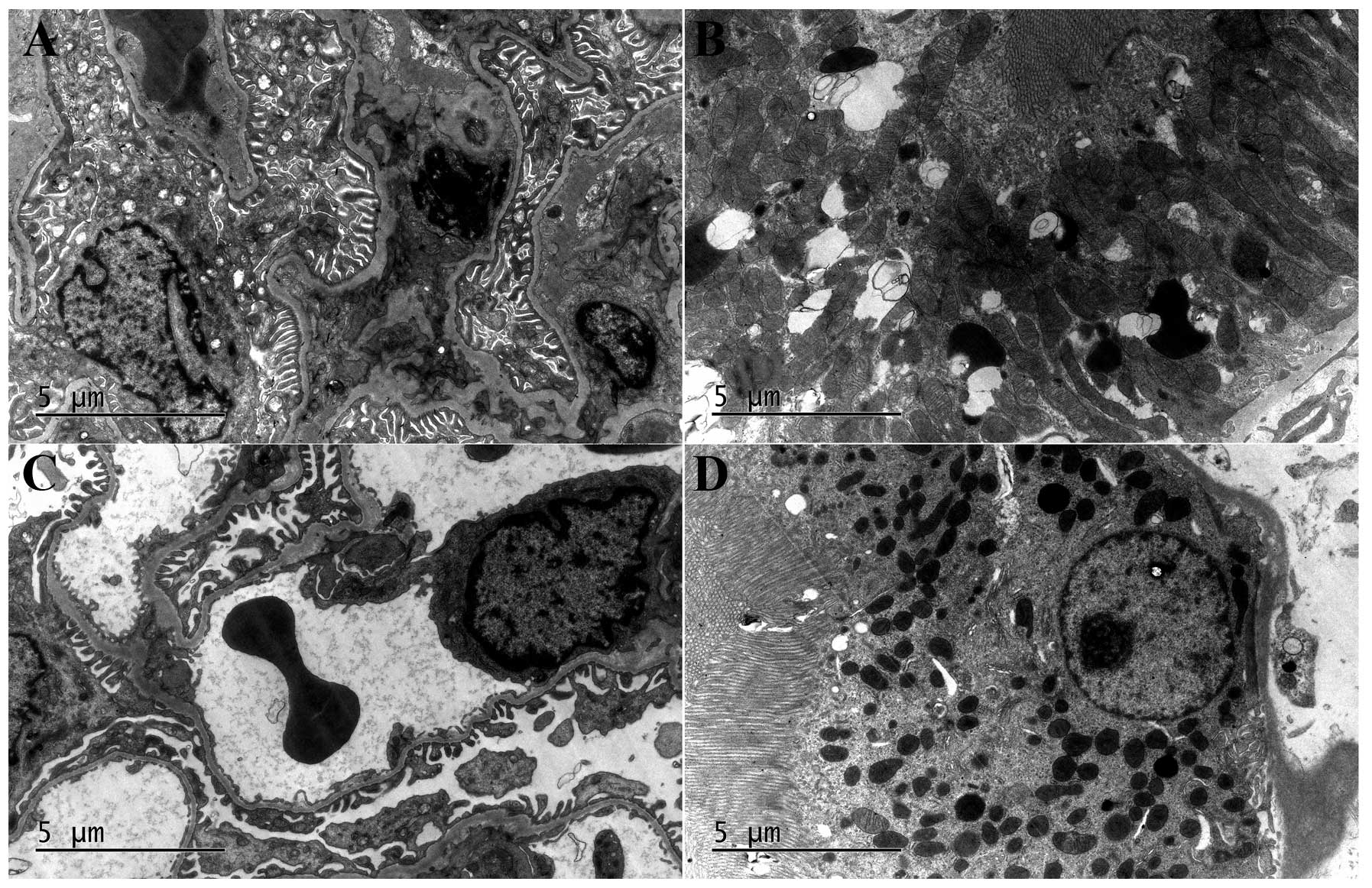|
1
|
Yasui T, Iguchi M, Suzuki S and Kohri K:
Prevalence and epidemiological characteristics of urolithiasis in
Japan: national trends between 1965 and 2005. Urology. 71:209–213.
2008. View Article : Google Scholar : PubMed/NCBI
|
|
2
|
Takahashi T, Yamane A, Okasho K, et al:
Incidence of upper urinary tract stone during 15 years in Tajima
area, Japan: a hospital-based study. Urol Res. 37:305–310.
2009.PubMed/NCBI
|
|
3
|
Tanagho EA: Urinary obstruction &
stasis. Smith’s General Urology. Tanagho EA and McAninch JW: 17th
edition. McGraw-Hill; New York: pp. 1662008
|
|
4
|
Mao S, Jiang H, Wu Z, et al: Urolithiasis:
the most risk for nephrectomy in nonrenal tumor patients. J
Endourol. 26:1356–1360. 2012. View Article : Google Scholar : PubMed/NCBI
|
|
5
|
Ji H, Menini S, Mok K, et al: Gonadal
steroid regulation of renal injury in renal wrap hypertension. Am J
Physiol Renal Physiol. 288:F513–F520. 2005. View Article : Google Scholar : PubMed/NCBI
|
|
6
|
Fung MM, Poddar S, Bettencourt R, et al: A
cross-sectional and 10-year prospective study of postmenopausal
estrogen therapy and blood pressure, renal function, and
albuminuria: the Rancho Bernardo Study. Menopause. 18:629–637.
2011.PubMed/NCBI
|
|
7
|
Cherikh WS, Young CJ, Kramer BF, et al:
Ethnic and gender related differences in the risk of end-stage
renal disease after living kidney donation. Am J Transplant.
11:1650–1655. 2011. View Article : Google Scholar : PubMed/NCBI
|
|
8
|
Topcu SO, Pedersen M, Nørregaard R, et al:
Candesartan prevents long-term impairment of renal function in
response to neonatal partial unilateral ureteral obstruction. Am J
Physiol Renal Physiol. 292:F736–F748. 2007. View Article : Google Scholar : PubMed/NCBI
|
|
9
|
Baiardi G, Macova M, Armando I, et al:
Estrogen upregulates renal angiotensin II AT1 and AT2 receptors in
the rat. Regul Pept. 124:7–17. 2005. View Article : Google Scholar : PubMed/NCBI
|
|
10
|
Armando I, Jezova M, Juorio AV, et al:
Estrogen upregulates renal angiotensin II AT(2) receptors. Am J
Physiol Renal Physiol. 283:F934–F943. 2002.PubMed/NCBI
|
|
11
|
Thompson J and Khalil RA: Gender
differences in the regulation of vascular tone. Clin Exp Pharmacol
Physiol. 30:1–15. 2003. View Article : Google Scholar : PubMed/NCBI
|
|
12
|
Sandberg K: Mechanisms underlying sex
differences in progressive renal disease. Gend Med. 5:10–23. 2008.
View Article : Google Scholar
|
|
13
|
Li C, Shi Y, Wang W, et al: alpha-MSH
prevents impairment in renal function and dysregulation of AQPs and
Na-K-ATPase in rats with bilateral ureteral obstruction. Am J
Physiol Renal Physiol. 290:F384–F396. 2006. View Article : Google Scholar : PubMed/NCBI
|
|
14
|
Efrati S, Berman S, Chachashvili A, et al:
Rosiglitazone treatment attenuates renal tissue inflammation
generated by urinary tract obstruction. Nephrology (Carlton).
14:189–197. 2009. View Article : Google Scholar : PubMed/NCBI
|
|
15
|
Alvarez A, Hermenegildo C, Issekutz AC, et
al: Estrogens inhibit angiotensin II-induced leukocyte-endothelial
cell interactions in vivo via rapid endothelial nitric oxide
synthase and cyclooxygenase activation. Circ Res. 91:1142–1150.
2002. View Article : Google Scholar
|
|
16
|
Rodríguez E, López R, Paez A, et al:
17Beta-estradiol inhibits the adhesion of leukocytes in TNF-alpha
stimulated human endothelial cells by blocking IL-8 and MCP-1
secretion, but not its transcription. Life Sci. 71:2181–2193.
2002.PubMed/NCBI
|
|
17
|
Mori M, Tsukahara F, Yoshioka T, et al:
Suppression by 17beta-estradiol of monocyte adhesion to vascular
endothelial cells is mediated by estrogen receptors. Life Sci.
75:599–609. 2004. View Article : Google Scholar : PubMed/NCBI
|
|
18
|
Silbiger SR: Raging hormones: gender and
renal disease. Kidney Int. 79:382–384. 2011. View Article : Google Scholar : PubMed/NCBI
|
|
19
|
Kang DH, Yu ES, Yoon KI and Johnson R: The
impact of gender on progression of renal disease: potential role of
estrogen-mediated vascular endothelial growth factor regulation and
vascular protection. Am J Pathol. 164:679–688. 2004. View Article : Google Scholar
|
|
20
|
Negulescu O, Bognar I, Lei J, et al:
Estradiol reverses TGF-beta1-induced mesangial cell apoptosis by a
casein kinase 2-dependent mechanism. Kidney Int. 62:1989–1998.
2002. View Article : Google Scholar : PubMed/NCBI
|
|
21
|
Ito K, Chen J, El Chaar M, et al: Renal
damage progresses despite improvement of renal function after
relief of unilateral ureteral obstruction in adult rats. Am J
Physiol Renal Physiol. 287:F1283–F1293. 2004. View Article : Google Scholar : PubMed/NCBI
|
|
22
|
Meng XM, Chung AC and Lan HY: Role of the
TGF-β/BMP-7/Smad pathways in renal diseases. Clin Sci (Lond).
124:243–254. 2013.
|
|
23
|
Ina K, Kitamura H, Tatsukawa S and
Fujikura Y: Significance of α-SMA in myofibroblasts emerging in
renal tubulointerstitial fibrosis. Histol Histopathol. 26:855–866.
2011.
|
|
24
|
Heiman JR, Rupp H, Janssen E, et al:
Sexual desire, sexual arousal and hormonal differences in
premenopausal US and Dutch women with and without low sexual
desire. Horm Behav. 59:772–779. 2011. View Article : Google Scholar : PubMed/NCBI
|
|
25
|
Curtis KS: Estrogen and the central
control of body fluid balance. Physiol Behav. 97:180–192. 2009.
View Article : Google Scholar : PubMed/NCBI
|
|
26
|
Frøkiaer J1 and Sørensen SS: Eicosanoid
excretion from the contralateral kidney in pigs with complete
unilateral ureteral obstruction. J Urol. 154:1205–1209.
1995.PubMed/NCBI
|
|
27
|
Yarger WE, Schocken DD and Harris RH:
Obstructive nephropathy in the rat: possible roles for the
renin-angiotensin system, prostaglandins, and thromboxanes in
postobstructive renal function. J Clin Invest. 65:400–412. 1980.
View Article : Google Scholar
|
|
28
|
Oelkers WK: Effects of estrogens and
progestogens on the renin-aldosterone system and blood pressure.
Steroids. 61:166–171. 1996. View Article : Google Scholar : PubMed/NCBI
|
|
29
|
Gallagher PE, Li P, Lenhart JR, Chappell
MC and Brosnihan KB: Estrogen regulation of angiotensin-converting
enzyme mRNA. Hypertension. 33:323–328. 1999. View Article : Google Scholar : PubMed/NCBI
|
|
30
|
Karl M, Berho M, Pignac-Kobinger J, et al:
Differential effects of continuous and intermittent
17beta-estradiol replacement and tamoxifen therapy on the
prevention of glomerulosclerosis: modulation of the mesangial cell
phenotype in vivo. Am J Pathol. 169:351–361. 2006. View Article : Google Scholar : PubMed/NCBI
|
|
31
|
Guccione M, Silbiger S, Lei J, et al:
Estradiol upregulates mesangial cell MMP-2 activity via the
transcription factor AP-2. Am J Physiol Renal Physiol.
282:F164–F169. 2002.PubMed/NCBI
|
|
32
|
Zdunek M, Silbiger S, Lei J and Neugarten
J: Protein kinase CK2 mediates TGF-beta1-stimulated type IV
collagen gene transcription and its reversal by estradiol. Kidney
Int. 60:2097–2108. 2001. View Article : Google Scholar : PubMed/NCBI
|
|
33
|
Neugarten J, Acharya A, Lei J and Silbiger
S: Selective estrogen receptor modulators suppress mesangial cell
collagen synthesis. Am J Physiol Renal Physiol. 279:F309–F318.
2000.PubMed/NCBI
|
|
34
|
Studd J: ‘PROFOX’ - the post HRT
nightmare. Climacteric. 14:217–219. 2011.
|
|
35
|
Dietel M: Hormone replacement therapy
(HRT), breast cancer and tumor pathology. Maturitas. 65:183–189.
2010. View Article : Google Scholar : PubMed/NCBI
|
|
36
|
Brown S: IMS updates its recommendations
on HRT. Menopause Int. 17:752011.PubMed/NCBI
|


















